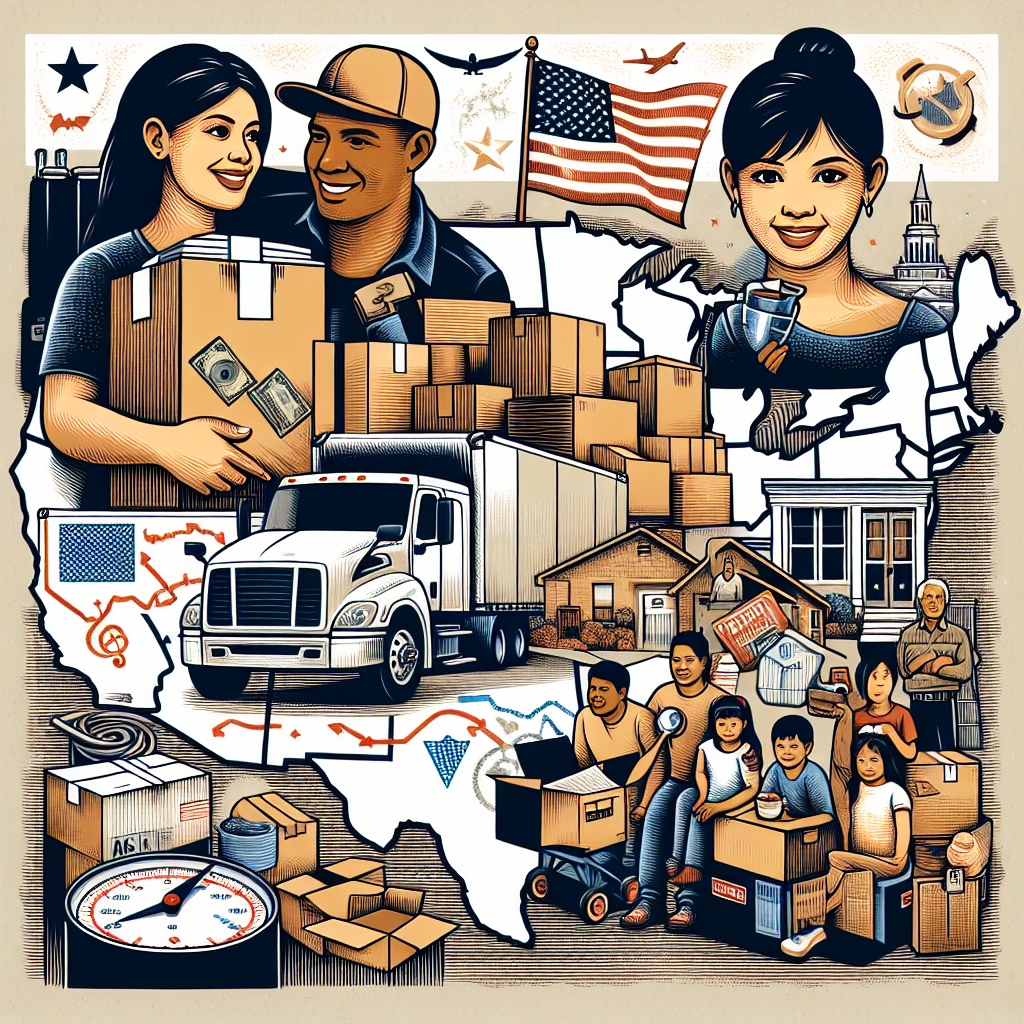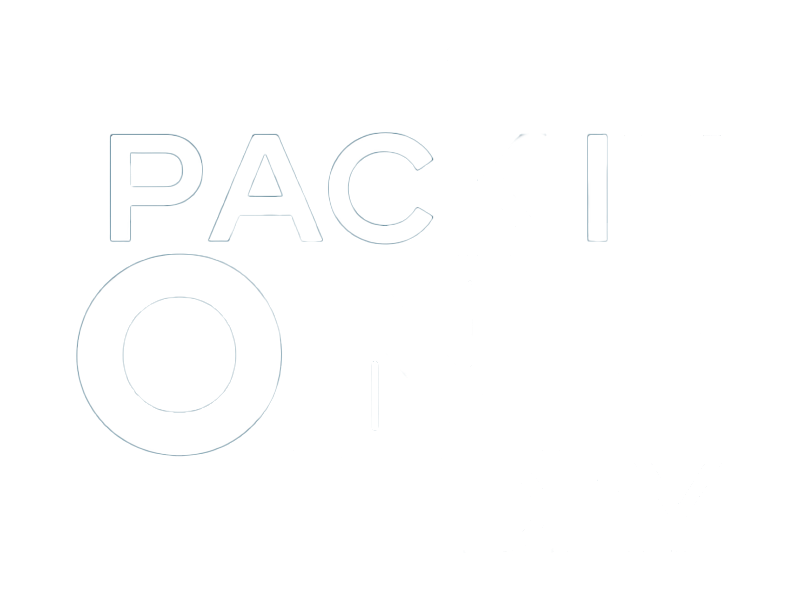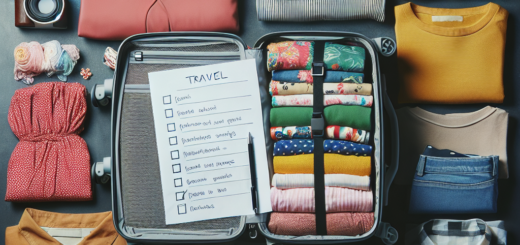The Best Ultimate Moving Cross-country Checklist
December 2, 2023

Embarking on a cross-country adventure or Moving Cross-country Checklist is an exciting journey filled with new experiences and memories waiting to be made. To ensure a smooth and stress-free move, it is essential to be well-prepared and organized. This comprehensive checklist will guide you through the process, from packing essentials to important documents, so that you can fully enjoy your travels, whether it’s a road trip, a picnic, a cruise, or even a hiking expedition. Say goodbye to the chaos of moving and hello to a seamless cross-country adventure!
Moving Cross-country Checklist : Your Complete Guide to a Smooth Transition
Moving cross-country can be an exciting and challenging adventure. As you embark on this new chapter in your life, it’s essential to be well-prepared to ensure a smooth and stress-free transition. This comprehensive guide will walk you through every step of the moving process, from the initial preparation to settling into your new home. So, buckle up and get ready for a seamless cross-country move!
1. Moving Cross-country Checklist Preparation:
Research
Before diving headfirst into your cross-country move, it’s crucial to conduct thorough research. Explore the new area you’ll be moving to, familiarize yourself with the local amenities, and learn about the surrounding communities. This will help you make informed decisions about your new neighborhood and ensure a smooth transition.
Create a Budget
Moving cross-country can quickly add up in terms of costs. To avoid any financial surprises, it’s essential to create a budget early on. Consider expenses like moving services, packing supplies, transportation, temporary accommodation, and additional costs associated with settling into your new home. Planning ahead will give you a clear understanding of your financial situation and allow you to make informed choices throughout the moving process.
Choose a Moving Company
One of the most critical decisions you’ll make when moving cross-country is choosing a reputable and reliable moving company. Take the time to research different moving companies, read reviews, and compare quotes. Ensure that the company you select has experience with long-distance moves and offers insurance options. By finding the right moving partner, you can trust that your belongings will be in safe hands during the journey.
Obtain Moving Insurance
While moving companies do their best to protect your belongings, accidents can happen. To safeguard your possessions during the move, consider obtaining moving insurance. Contact your insurance provider to check if your homeowner’s insurance covers any potential damages during the move. If not, explore additional insurance options offered by your chosen moving company or independent insurers. Having the appropriate coverage will provide peace of mind throughout the moving process.
2. moving cross-country Documentation:
Transfer Medical Records
Taking care of your health during a move should be a top priority. Contact your current healthcare providers to transfer your medical records to new doctors in your destination area. This will ensure continuity of care and make it easier to access medical services once you’ve relocated. Additionally, don’t forget to refill any necessary medications before you leave to avoid running out during the transition period.

Update Your Address
Updating your address is a crucial step in ensuring a seamless transition to your new home. Notify the post office of your forwarding address to redirect any mail to your new location. Additionally, inform all relevant parties of your address change, including government entities, financial institutions, employers, and subscription services. By keeping everyone updated, you’ll minimize the chances of missing important documents or experiencing any disruptions to your daily life.

Notify Banks and Credit Card Companies
Inform your banks and credit card companies of your upcoming move to avoid any interruptions or security concerns with your accounts. This is especially crucial if you’re moving to a location with different time zones or if you’ll be using your accounts frequently during the transition period. By keeping your financial institutions informed, you’ll avoid any unnecessary complications and have peace of mind.
Notify Utility Companies
To prevent any confusion or service interruptions, notify your utility companies of your move-in date and provide them with your new address. Arrange for the disconnection of utilities at your current home and set up the connection of services at your new residence. This includes electricity, gas, water, internet, and any other services you rely on. Timely communication will ensure that you arrive at a fully functional and comfortable new home.
Forward Mail & Subscriptions
Beyond notifying the post office of your change of address, it’s essential to update your mailing address with other important subscriptions and organizations. This includes magazines, newspapers, online retailers, and any other services that deliver regularly to your door. By updating your mailing address ahead of time, you won’t miss out on any essential mail or subscriptions during the move.
Change Driver’s License & Vehicle Registration
If you’re moving to a different state or country, you’ll need to update your driver’s license and vehicle registration accordingly. Research the specific requirements of your new location and make any necessary appointments or arrangements. This will ensure that you remain compliant with local laws and regulations, allowing you to smoothly transition to your new community.
3. moving cross-country Packing :

Create a Packing Plan
To tackle the daunting task of packing, create a detailed packing plan. Start by decluttering and getting rid of items you no longer need or want. Create a room-by-room inventory and determine which items will be packed together. Set goals and timelines to ensure that you’re steadily making progress leading up to the moving day. A well-thought-out packing plan will save you time, effort, and unnecessary stress throughout the moving process.
Gather Packing Supplies
Before you start packing, gather all the necessary packing supplies. This includes sturdy boxes, bubble wrap, packing tape, labels, markers, and any other materials you’ll need to secure your belongings. Acquiring these supplies ahead of time will prevent any delays or last-minute scrambling when it’s time to pack. Don’t forget to use padding materials to protect fragile items and keep them safe during transport.
Label Boxes
Labeling your moving boxes is an essential step in ensuring an organized and efficient unpacking process. Clearly label each box with its contents and the room it belongs to. This will make it easier for the movers to place the boxes in the appropriate locations in your new home. Additionally, consider color-coding your boxes for even greater efficiency. By adopting these labeling techniques, you’ll save time and frustration when the time comes to unpack.
Pack a First Night Box
When you arrive at your new home, you’ll likely be tired and in need of essentials. To make your first night as comfortable as possible, pack a “first night box” with essential items. This box should include toiletries, a change of clothes, bedding, medications, snacks, and anything else you’ll need immediate access to. Having a well-packed first night box will ensure a smooth transition into your new space without rushing to find necessary items.
Pack Essential Documents
In the chaos of a move, crucial documents can easily get lost or misplaced. To avoid this, prioritize gathering and packing your essential documents separately. This includes birth certificates, passports, social security cards, medical records, insurance policies, financial documents, and any other important paperwork. Keep these items secure and easily accessible during your move to ensure they remain safe and readily available.
Pack Fragile Items with Care
It’s essential to take extra precautions when packing fragile items to prevent damage during transit. Use bubble wrap, packing paper, or blankets to wrap delicate items individually. Fill any empty spaces in boxes with packing peanuts or crumpled paper to provide additional cushioning. Label the boxes as “fragile” and clearly mark which side should be facing up. By packing fragile items with care, you’ll increase the likelihood of them arriving intact at your new home.
4. Moving Cross-country Checklist : Home Preparation :

Clean and Declutter
Before packing up your entire life, take the opportunity to clean and declutter your current home. Cleaning thoroughly will leave your old space in good condition and make it easier to settle into your new home. Additionally, decluttering will reduce the number of items you need to pack and unpack, making the entire process more manageable. Donate or sell any items that you no longer need or want, and dispose of any hazardous materials responsibly.
Take Inventory
Creating an inventory of your belongings before the move is a useful step in the event of loss or damage. Take photos or videos of your valuables, noting their condition and any identifying information. Keep this inventory cataloged and stored in a safe place. In the unlikely event of a loss, having an inventory will help streamline the process of filing insurance claims or police reports.
Dispose of Hazardous Materials
Properly dispose of any hazardous materials that are not allowed to be transported during a move. These include flammable, corrosive, or explosive substances, such as cleaning supplies, paints, chemicals, propane tanks, and batteries. Check local regulations and guidelines on how to safely dispose of these materials. By taking care of hazardous items responsibly, you’ll ensure a safe and compliant move.
Arrange for Utility Disconnections and Connections
Contact your utility providers to schedule the disconnection of services at your current home on your desired moving out date. Additionally, arrange for the connection of services at your new residence, ensuring that everything is up and running upon your arrival. Consider any specific requirements or paperwork involved in these processes, and make the necessary arrangements in advance to avoid any inconveniences.
Handle Special Items
If you have special items that require extra care or attention, make sure to address them during the moving process. This may include valuable artwork, antiques, musical instruments, or sentimental items with great emotional significance. Consider hiring professionals with expertise in handling and transporting these special items. By taking proper care of your most precious belongings, you’ll ensure they arrive safely at your new home, bringing you joy for years to come.
5. Moving Cross-country Trasportarion :

Choose a Moving Method (Truck, Professional Mover, or DIY)
When it comes to transporting your belongings cross-country, you have several options to consider. You can rent a moving truck and handle the move yourself, hire professional movers to take care of everything, or find a hybrid solution that meets your specific needs. Evaluate factors such as budget, time constraints, the size of your move, and your personal preferences. Choose the option that best suits your circumstances and provides you with peace of mind during the transportation process.
Schedule Vehicle Maintenance
If you’re planning to drive your own vehicle to your new home, schedule a maintenance check-up before hitting the road. Ensure that your vehicle is in good condition, including tire pressure, oil change, and checking for any potential issues. This will minimize the chances of encountering vehicle trouble during your journey and ensure a smooth and safe transition to your new location.
Plan Your Route
Before starting your cross-country journey, plan your route carefully. Consider factors such as distance, road conditions, weather, and any potential scenic routes you may want to explore. Take note of rest areas, gas stations, and accommodations along the way to ensure a comfortable and enjoyable trip. Use online mapping tools or GPS systems to navigate your way efficiently and avoid unnecessary detours.
Consider Pet Transportation
If you have furry friends joining you on your cross-country move, it’s important to plan for their transportation as well. Research pet-friendly accommodations along your route, secure appropriate travel carriers, and pack essentials such as food, water, and pet supplies. Consult with your veterinarian for any necessary vaccinations or documentation required for travel. By taking care of your pets’ needs, you can ensure their comfort and safety throughout the journey.
5. Storage :
Research Storage Options
If you need temporary storage during your move, research storage facilities in your new location’s vicinity. Consider factors such as security, climate control, accessibility, and pricing when selecting a storage provider. Take the time to read reviews and visit the facilities in person if possible. By doing your due diligence, you’ll find a storage solution that meets your needs and protects your belongings during the transition period.
Determine Storage Needs
Assess your storage needs before selecting a storage unit. Determine the size of the unit you’ll require and whether you need additional features such as climate control or drive-up access. Make an inventory of the items you plan to store and consider their dimensions and fragility. By accurately determining your storage needs, you’ll optimize space, ensure efficient packing, and have easy access to your belongings when needed.
Pack and Label Storage Items
When packing items for storage, be mindful of their long-term protection. Use sturdy boxes, appropriate packing materials, and label each box clearly to indicate its contents. This will make it easier to locate specific items when you need them in the future. Consider creating an inventory list of items in storage to keep track of what you have stored and ensure nothing gets misplaced or forgotten.
Secure Storage Unit
Before storing your belongings, ensure that your chosen storage unit is clean, secure, and well-maintained. Take necessary steps to secure the unit, such as using a high-quality lock and considering additional security measures like video surveillance or an alarm system. By taking these precautions, you’ll have peace of mind knowing that your stored items are safe and protected until you need them again.
6. Finances :
Plan for Travel Expenses
Moving cross-country involves more than just the cost of transporting your belongings. Consider other travel expenses such as fuel, accommodations, meals, and tolls. Create a travel budget to ensure that you have sufficient funds to cover these additional costs. Research affordable accommodations and plan your meals in advance to maximize your budget and make the most of your journey.
Update Insurance Policies
As you prepare for your cross-country move, don’t forget to update your insurance policies to reflect your new address and circumstances. Contact your insurance providers to transfer or update your homeowner’s, renter’s, or auto insurance policies. Ensure that your coverage is sufficient for your new location and any specific risks unique to the area. By keeping your policies up to date, you’ll be protected in case of any unforeseen events.
Notify Financial Institutions
Take the time to notify your financial institutions of your upcoming move. Contact your bank, credit card companies, and any other financial service providers to update your address. This will ensure that your financial statements, credit card bills, and other financial documents reach you promptly. Additionally, consider setting up online banking services and electronic statements to minimize the reliance on physical mail in the future.
Cancel or Transfer Subscriptions and Memberships
As you prepare to move cross-country, review your current subscriptions and memberships. Determine which ones you should cancel, transfer, or update with your new address. This includes gym memberships, magazine subscriptions, online streaming services, and any other ongoing commitments. By proactively managing your subscriptions and memberships, you’ll avoid unnecessary charges and ensure a smooth transition to your new location.
7. Moving Cross-country : Moving Day :
Confirm Moving Arrangements
In the days leading up to your move, confirm all arrangements with your chosen moving company or coordinate with your DIY moving plan. Ensure that all details, such as the date, time, and location, are confirmed and clearly communicated. This will minimize any last-minute surprises or schedule conflicts, allowing for a seamless moving day experience.
Prepare an Essentials Bag
On moving day, it’s essential to pack an essentials bag containing items you’ll need immediate access to. This bag should include toiletries, a change of clothes, important documents, medication, phone chargers, and any other essential items. By keeping these necessities on hand, you won’t have to rummage through boxes to find what you need during the first couple of days in your new home.
Disconnect and Pack Electronics
Before loading electronics into moving boxes, disconnect and properly pack each item. Take pictures of the connections and cables to assist with setup at your new home. Keep cables and accessories together in labeled bags or containers to prevent any confusion during the unpacking process. For delicate electronics, consider using original packaging or specialized cushioning materials for added protection.
Take Final Meter Readings
On moving day, be sure to take final meter readings for your utilities, such as electricity, gas, and water. Document these readings and notify your utility companies accordingly to ensure accurate billing. Additionally, take note of any appliances or fixtures that are staying behind or being transferred to the new owner, and communicate this information with the relevant parties.
Lock Up
Before leaving your old home for the last time, conduct a thorough check to ensure that all doors and windows are securely locked. Double-check each room, patio, and any other access points. Taking this precautionary step will provide peace of mind knowing that you’ve left your old home in a secure state.
Don’t forget to Say Goodbye to Neighbors
As you move on to your new adventure, take a moment to bid farewell to your neighbors and express gratitude for the time you’ve spent together. Leave a forwarding address if you wish to stay in touch and maintain those connections. Building positive relationships with neighbors can enhance your new community experience and foster a sense of belonging.
8. After the Move :
Unpack Essentials
Upon arriving at your new home, start by unpacking your essentials box. Set up your bed, bathroom, and kitchen essentials to ensure comfort and functionality from the first night. By prioritizing these essentials, you’ll be able to settle in smoothly and gradually tackle the remaining unpacking tasks.
Set Up Utilities
Once you’ve settled into your new home, contact your utility companies to confirm the connection of services. Ensure that electricity, gas, water, and internet are up and running. Familiarize yourself with any new systems or instructions related to utilities in your new location. By promptly setting up utilities, you’ll establish a comfortable and functional living environment.
Register Kids in School
If you have children, it’s important to prioritize their education during the transition to your new home. Research schools in your new area before the move and determine the enrollment process. Once you’ve arrived, contact the appropriate school authorities to register your children and provide any necessary documentation. By addressing your children’s educational needs promptly, you’ll ensure a smooth transition to a new school environment.
Find New Healthcare Providers
As you settle into your new community, it’s crucial to find new healthcare providers. Research local doctors, dentists, and specialists in your new area. Schedule appointments for routine check-ups and establish a relationship with your new healthcare team. Additionally, transfer any necessary medical records to ensure continuity of care. Taking care of your health is essential during a cross-country move, and finding reliable healthcare providers is a significant step in that direction.
Update Address on Legal Documents
To ensure that you remain compliant with legal requirements, update your address on all relevant legal documents. This includes your driver’s license, vehicle registration, voter registration, and any official documentation related to your residency. Consult the appropriate government agencies or online resources to understand the necessary steps and requirements specific to your new location. By promptly updating your address, you’ll avoid any potential complications or penalties.
Explore the Area
Getting to know your new surroundings is an exciting part of moving cross-country. Take the time to explore your new neighborhood and nearby amenities. Visit local shops, parks, restaurants, and attractions to get a feel for the community. Join community groups or attend neighborhood events to meet new people and make connections. By immersing yourself in your new environment, you’ll quickly adjust and feel at home in your new community.
9. Safety & security :
Change Locks
Upon moving into your new home, it’s essential to prioritize your safety and security. Change the locks on all exterior doors to ensure that you and your family are the only ones with access to your new home. Contact a reputable locksmith or consult with a trusted hardware store for assistance. By taking this precautionary step, you’ll ensure the peace of mind that comes with knowing your new home is secure.
Update Home Security
Evaluate and update your home security measures to protect your new home and belongings. Consider installing a security system, including alarm systems, security cameras, and motion sensor lights. Familiarize yourself with emergency exits and ensure that fire extinguishers and smoke detectors are in working condition. By implementing comprehensive home security measures, you’ll create a safe and secure environment for you and your family.
Join Community Groups or Neighborhood Watch
Building relationships within your new community can contribute to a sense of security and belonging. Consider joining community groups or participating in a neighborhood watch program to connect with your neighbors and contribute to a safe living environment. Engaging with your community will not only enhance your overall experience but also provide additional support and security.
Protect Personal Information
During a cross-country move, it’s crucial to protect your personal information. Update your address and contact details with relevant entities, but also be cautious with sharing your personal information. Be aware of potential scams or fraudulent activities that may target individuals in the midst of a move. Safeguard your personal documents, financial information, and any other sensitive data to prevent identity theft or other security breaches.
Moving cross-country is an adventure filled with opportunities for growth and new experiences. By following this comprehensive guide, you’ll be well-equipped to navigate each stage of the moving process. From preparation and documentation to packing and settling into your new home, this guide will ensure a smooth transition to the next exciting chapter of your life. So buckle up, embrace the journey, and enjoy all that your cross-country move has to offer!



